
(Selected Articles from the Journal of Command and Control)
Zhang Lanyong, Wang Menglin. Joint optimization algorithm of edge computing computing offloading and computing resource allocation [J]. Journal of Command and Control, 2023, 9 (3): 323-334
ZHANG L Y, WANG M L. Joint optimization algorithm of edge computing computing offloading and computing resource allocation[J]. Journal of Command and Control, 2023, 9 (3): 323-334
Abstract
To address the shortcomings of the “local-cloud” structure in logistics asset management systems, a joint optimization algorithm for edge computing offloading decisions and resource allocation services is designed. This algorithm offloads original data computation tasks to the edge, providing better offloading decisions and resource allocation methods. A delay-energy cost model is established based on task, computing capacity, power, and other information, and the problem is solved using the bisection method, Lagrange multiplier method, and improved particle swarm algorithm, achieving joint iterative optimization with multiple users and nodes participating in the cloud. Experimental results show that this method effectively reduces the total system cost, decreasing the total cost of the Random algorithm by 59.34%, the Greedy algorithm by 45.74%, and the STPSO algorithm by 24.07%.
Fixed asset management is a very serious, policy-oriented, principled, and technical logistics work in enterprises and institutions. It aims to control asset information, improve management efficiency, and reduce expenditure costs, enhancing the level of asset management in enterprises. As early as 2020, the Ministry of Finance issued a notice on strengthening the management of fixed assets in administrative institutions to improve the logistics asset management level of institutions. In addition, investment in military logistics construction in China has increased year by year, with logistics work conferences pointing out the need to accelerate the construction of a modern military logistics system and a modern asset management system for the military. Whether for military or civilian use, the construction of logistics asset management is a key development focus at this stage, and it is necessary to explore a path that can promote the modernization and intelligence of logistics asset management, leading the strength of China’s logistics asset management to a new level.
China’s asset management has undergone a development process from manual accounting to two-dimensional and three-dimensional barcodes, forming an information management system. Due to the particularity of asset management, existing systems generally have the following problems: low refinement level, limited platform functions; difficulty in asset identification and positioning, low visualization level; non-unified coding system, incomplete coding coverage information. Therefore, combining technologies such as sensor positioning, grid partitioning, and real-time monitoring to build a unified logistics asset business management platform that can provide refined support in an all-weather, all-region environment is a primary goal of modern logistics construction.
Experts and scholars conduct research on related technologies to improve the service level of asset management systems. LIN Y completed the design of a warehouse logistics management system based on radio frequency identification (RFID) to address the issues of high manual operation and low efficiency in warehouse management, designing an automated RFID-based warehouse solution to meet the needs of large warehouse enterprises. WANG T and others used RFID technology to establish an asset management platform based on Internet of Things technology to achieve reasonable and efficient use and deployment of fixed assets, optimizing and simplifying management processes, ensuring reliable and complete asset data. LEE C and others proposed a Bluetooth-based indoor positioning system for asset tracking, achieving an economical and efficient asset management solution.
Using Beidou grid partitioning technology to calculate asset locations and establish a unified positioning coding standard, asset data is collected using RFID systems, Beidou positioning systems, cameras, and other devices, utilizing software and database technology to implement an advanced asset management system with real-time monitoring and asset visualization functions. In the development of logistics asset management systems, traditional system architectures directly connect enterprise management systems to logistics cloud computing centers. As the number of connected hardware devices gradually increases, a large amount of raw data uploaded to the cloud without calculation occupies more bandwidth and server resources, placing a significant resource burden on system operation and maintenance, and is not conducive to real-time retrieval of asset environment video monitoring images, which affects user experience to a certain extent, limiting the modernization of logistics asset management systems.
Distributed computing technologies such as cloud computing, federated learning, and edge computing have been proposed to coordinate the use of shared resources. Edge computing stands out among many new communication technologies due to its high real-time performance, strong computing capability, high bandwidth, and high security. Introducing an edge layer into the system architecture allows for timely processing and response of raw data such as positioning and RFID tags at the data source, reducing data transmission consumption by directly transmitting decoded results to the cloud. At the same time, the combination of edge computing and multi-code stream processing technology also provides solutions for real-time video monitoring needs, enhancing the value of video image data, reducing bandwidth and delay, and improving processing efficiency.
The core of edge computing technology is based on distributed edge servers that provide servers with network, computing, and storage functions at the data source, completing offloaded computing tasks and returning results to the device end after resource allocation and other steps. To enhance technical service performance, this paper studies resource allocation and computing offloading in the edge computing service model, optimizing scheduling models and seeking better control strategies to provide optimal services.
Related experts have also conducted research on issues such as edge computing offloading and resource allocation. SONG H K and others studied the deployment of edge computing servers and user offloading associations in wireless edge networks, designing an improved genetic algorithm to solve this problem, effectively reducing average service delay. TANG C G and others proposed a universal vehicle edge computing solution that supports caching while considering the response delay and energy consumption brought by task caching, showing advantages over other algorithms. XU F and others proposed a two-stage computing offloading algorithm that can effectively reduce delay. Huang Dongqing and others proposed a joint computing offloading and resource allocation strategy for multiple users, using the Lagrange multiplier method to obtain optimal computing resource allocation and the greedy algorithm to obtain optimal offloading decisions, continuously iterating to reduce system costs.
Currently, many experts are optimizing asset management systems and conducting research on edge computing technology services, but most focus on optimizing single objectives. Many experts also perform multi-objective optimization for single services, such as multi-objective optimization of delay and energy consumption for offloading decisions or resource allocation problems. As research continues to deepen, there is a gradual shift towards multi-service joint optimization, proposing the concept of joint optimization of computing offloading and resource allocation, obtaining better solutions through the iterative solution of two business problems. Due to the complexity of the joint optimization calculation process, existing papers generally use algorithms with lower complexity to solve offloading decision calculation problems, such as using the greedy algorithm in literature [14]. Therefore, this paper studies the computing offloading and resource allocation problems, solving the computing resource allocation problem based on mathematical derivation and calculating offloading decisions based on evolutionary algorithms, iterating to calculate joint optimization of delay and energy consumption objectives to obtain optimal control strategies.
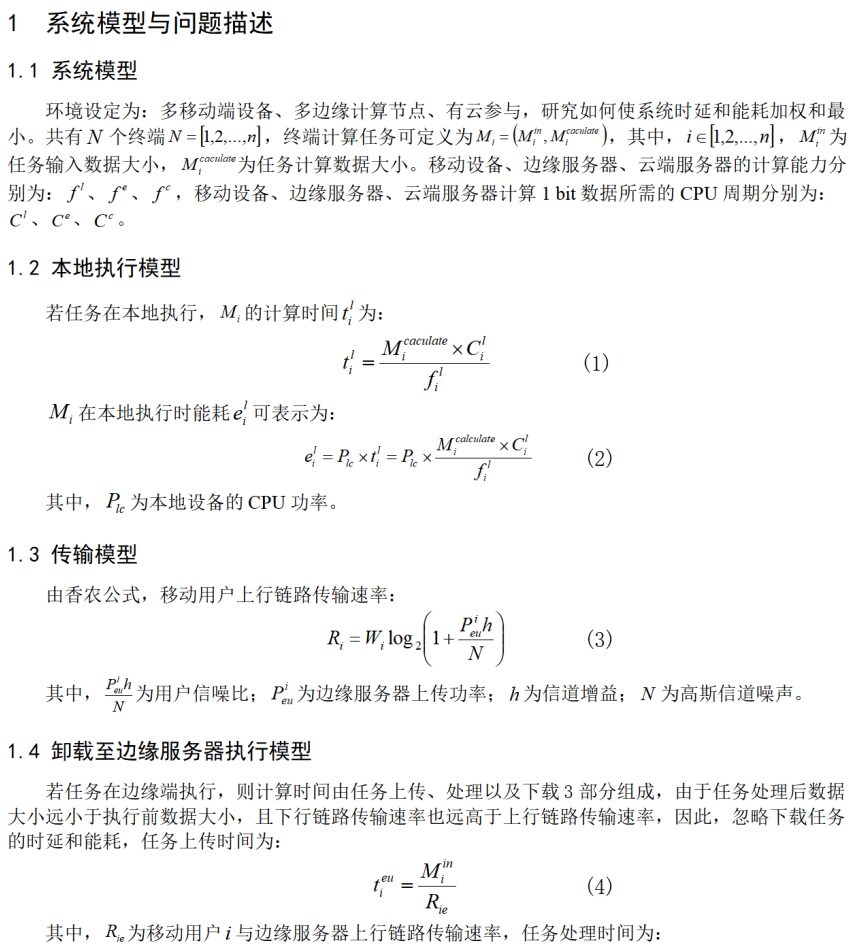
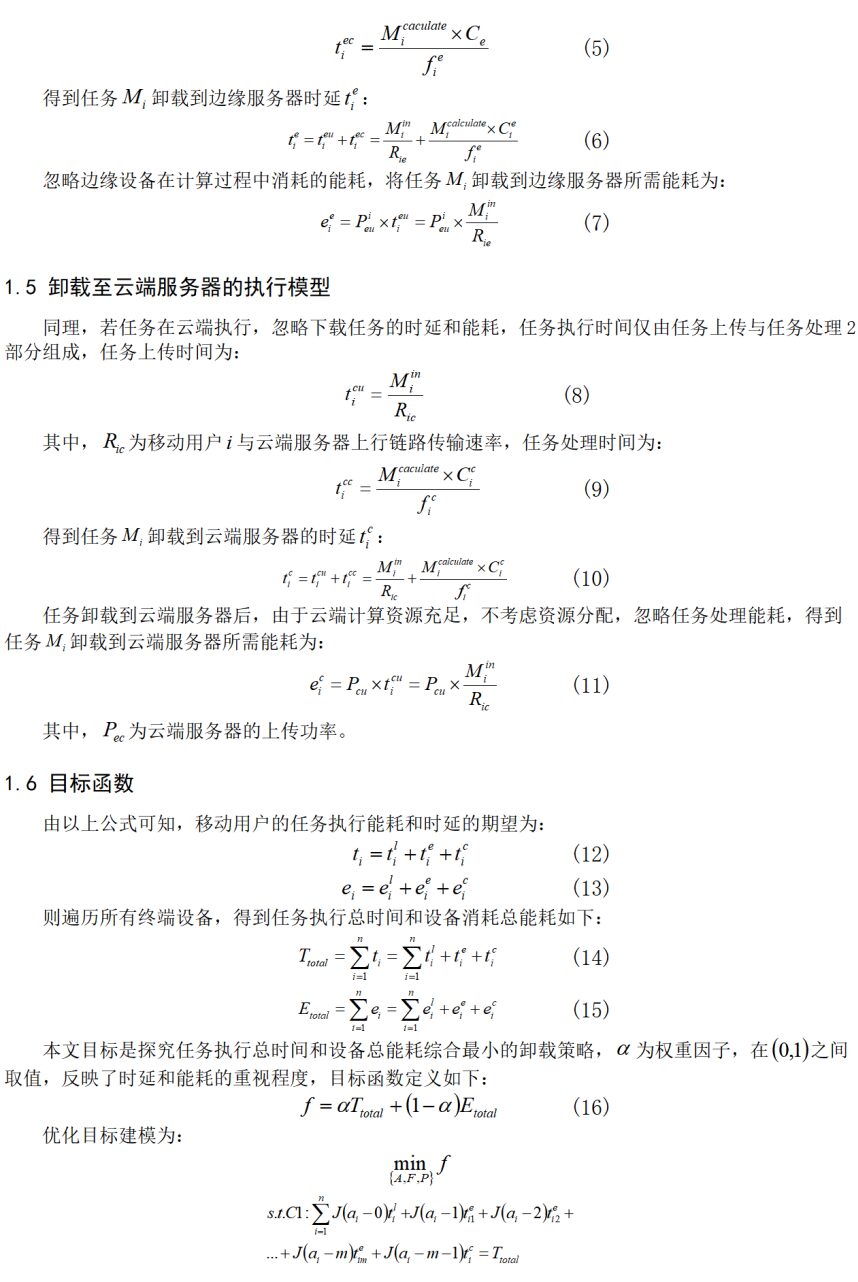
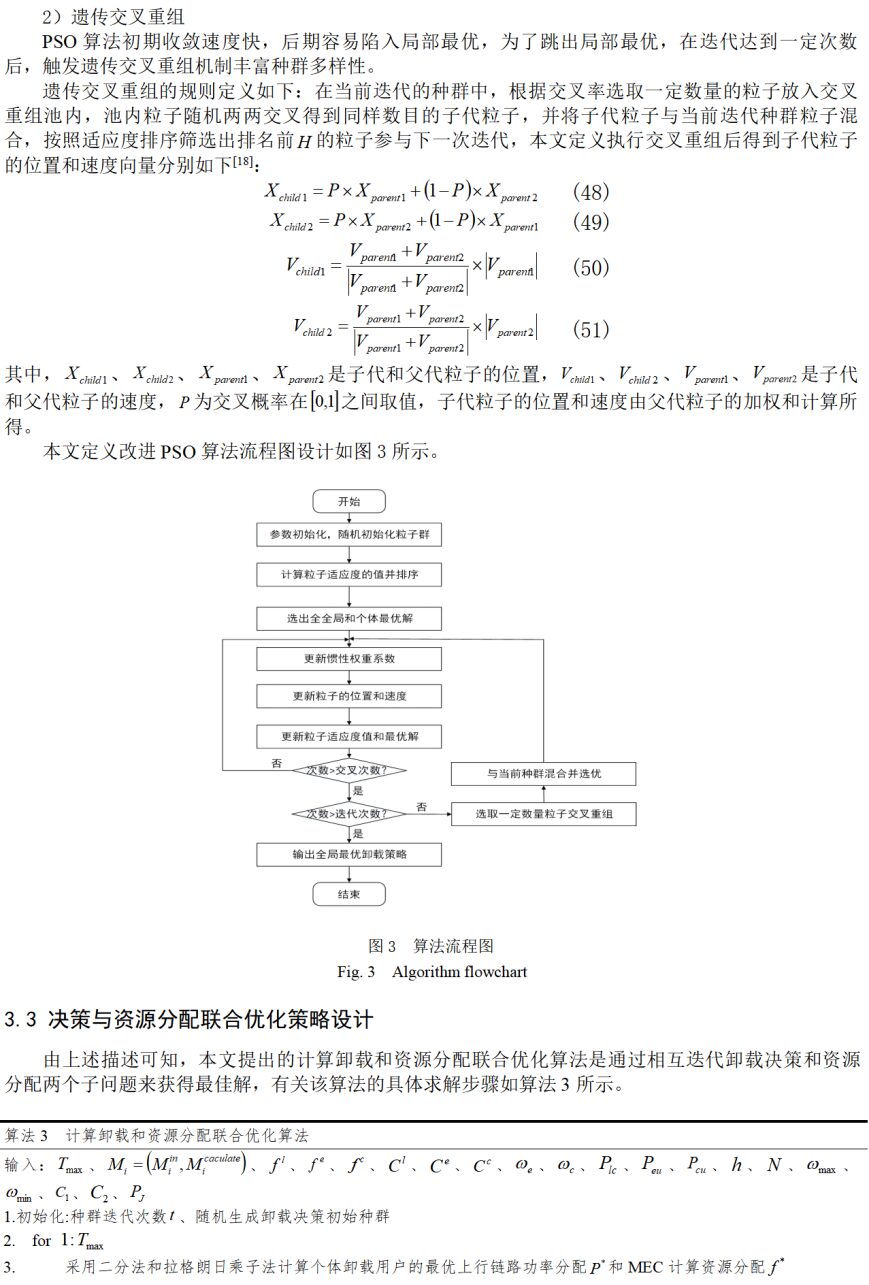

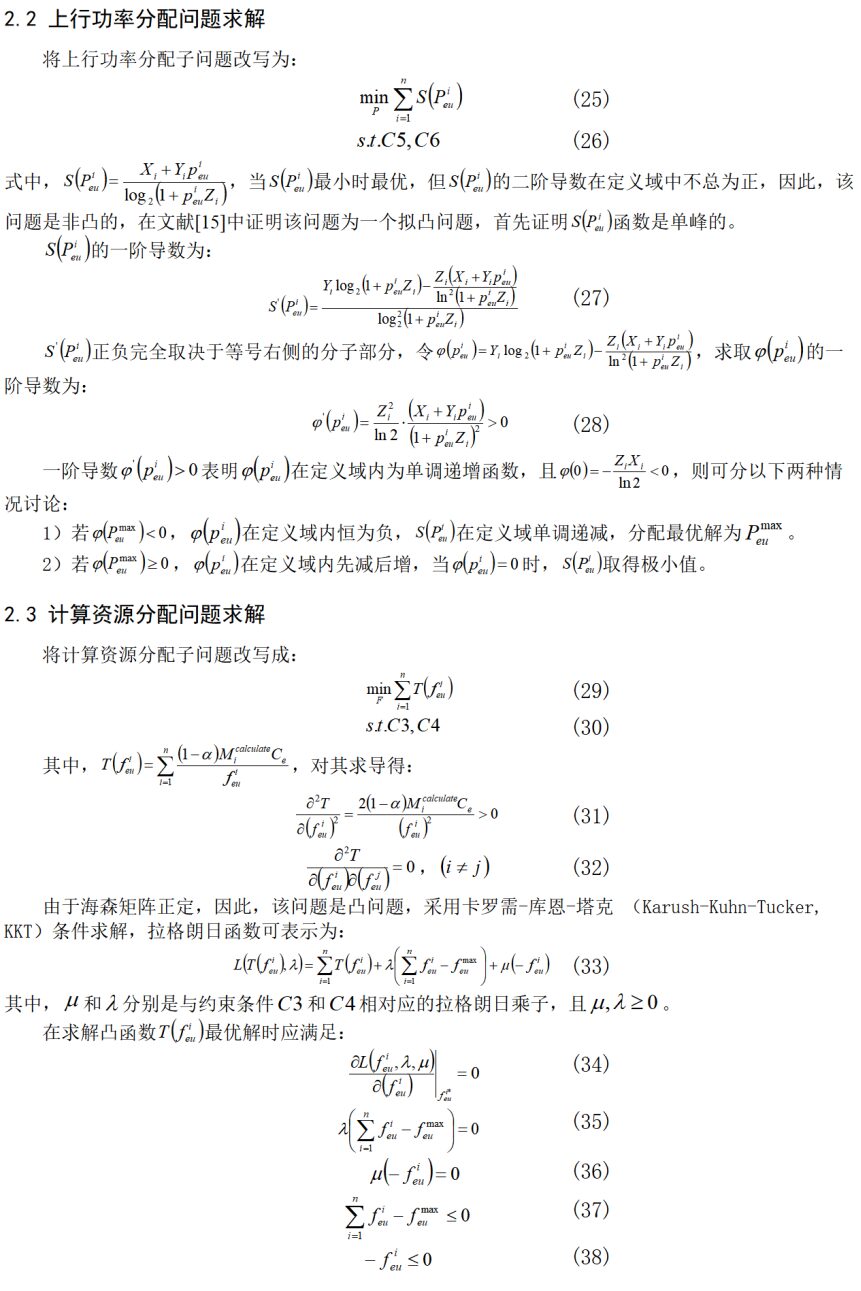
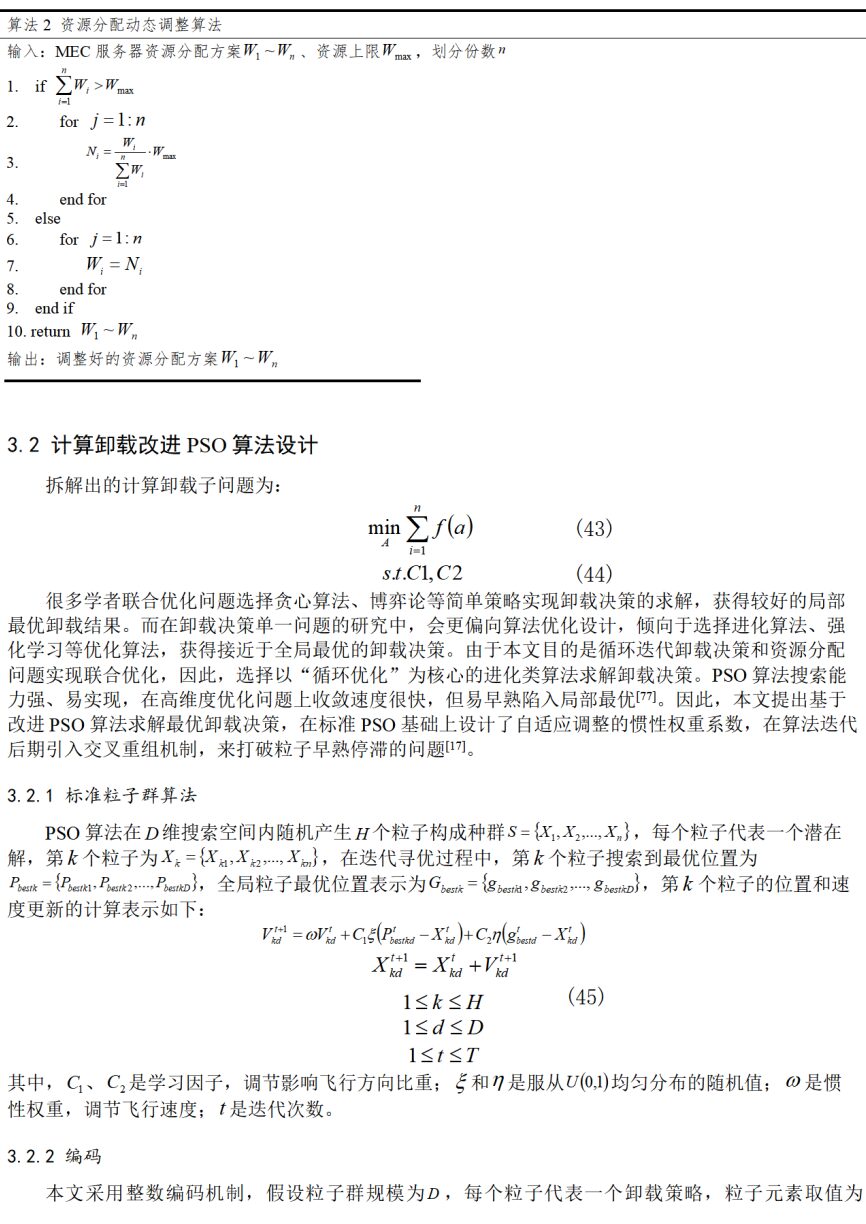
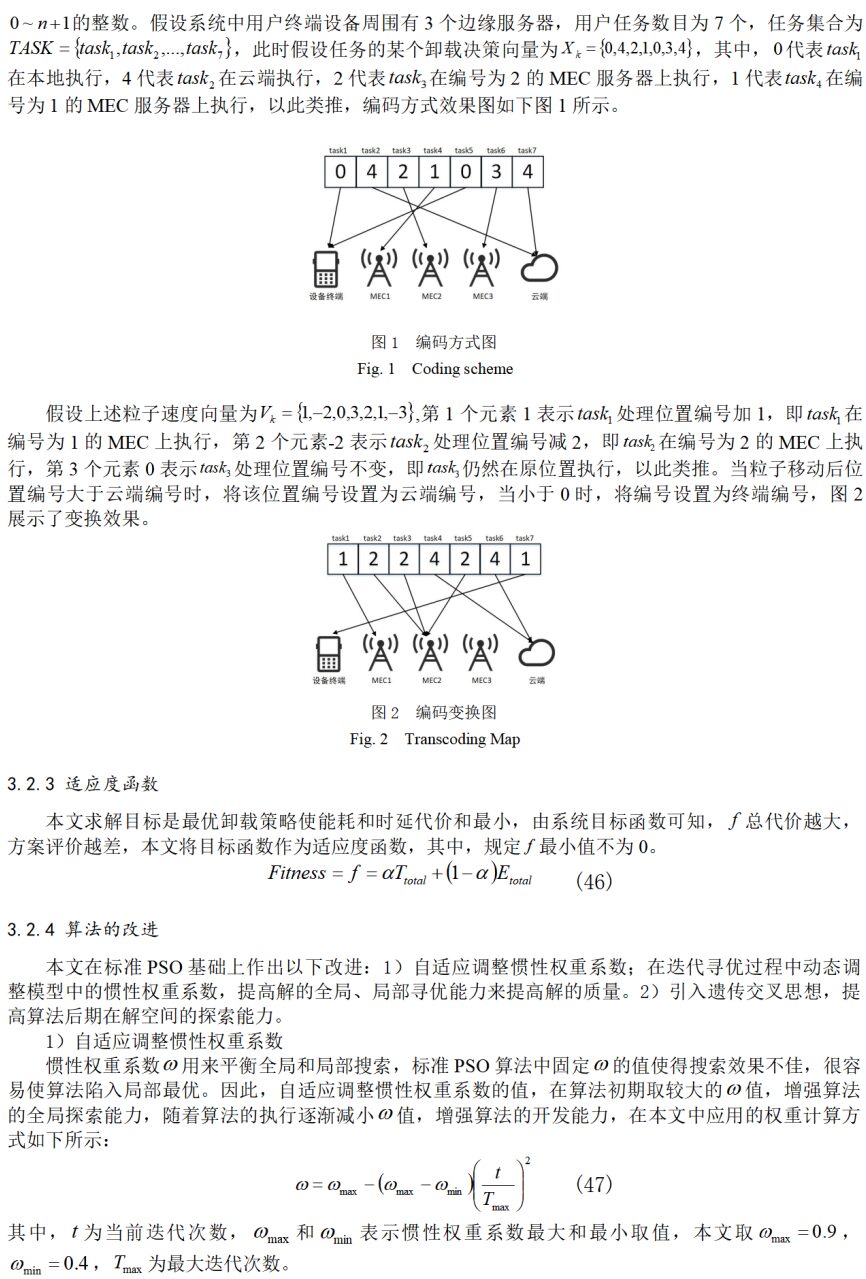
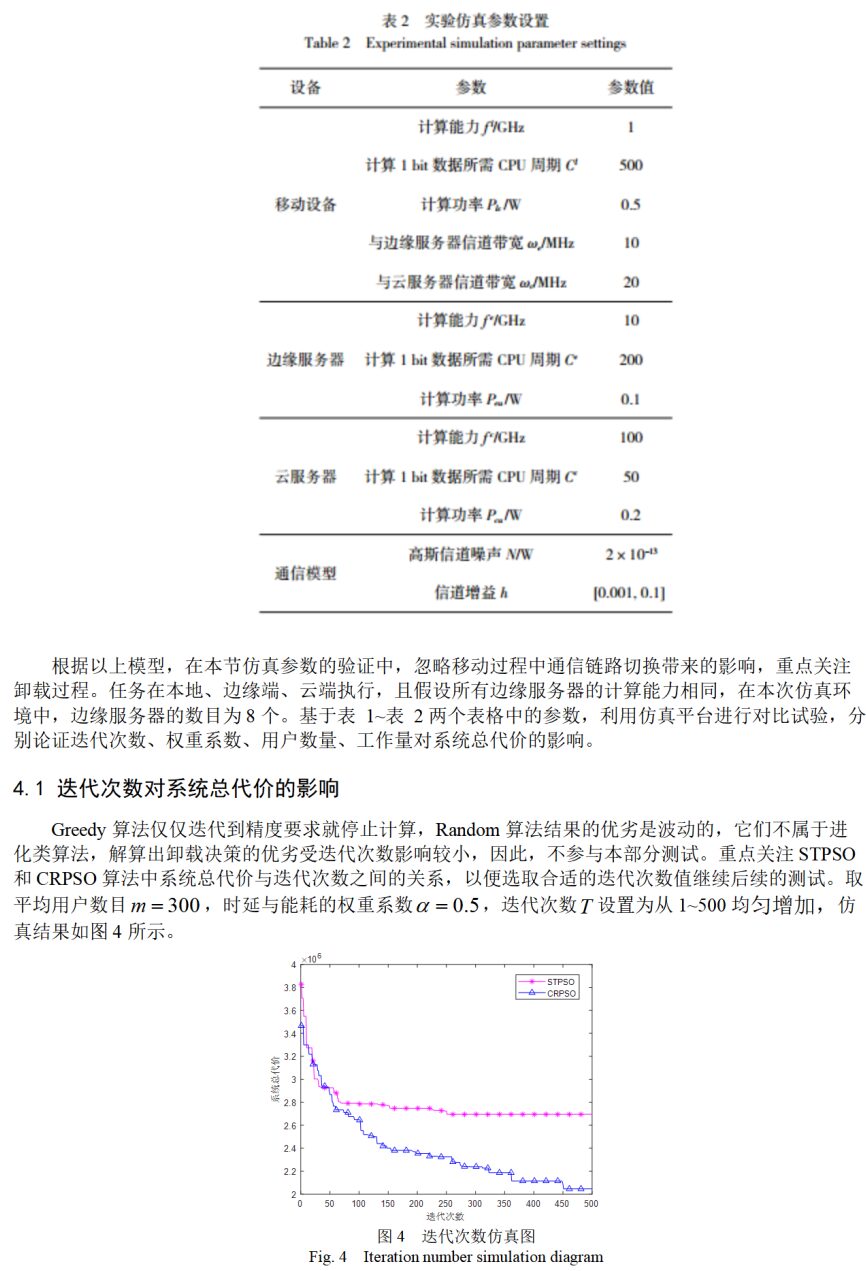


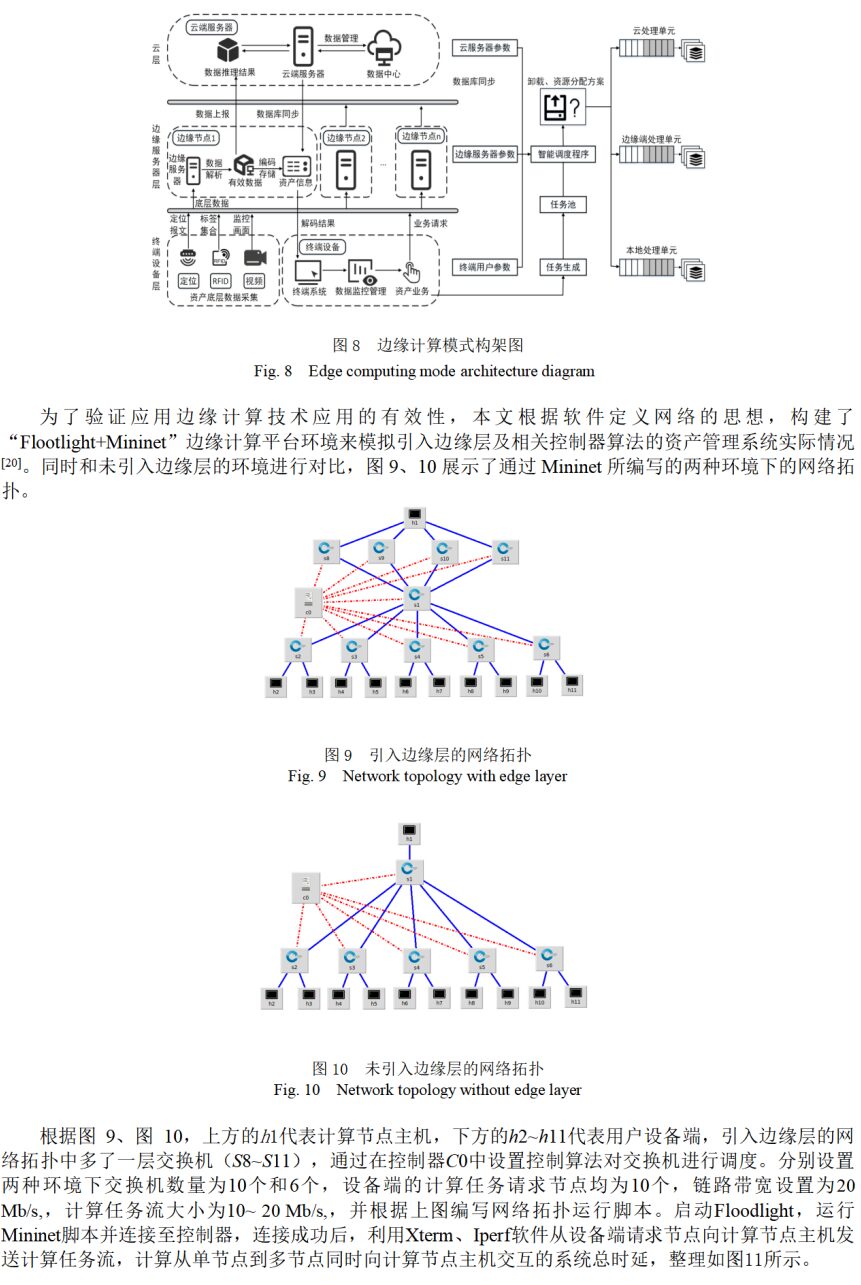

References
[1] OKOH P. Integrated logistics support and asset management(Ilsam) [J]. Infrastructure Asset Management, 2019, 6(4) :245-257.
[2] Zhang Ke, Sun Hao, Yan Fei, et al. Asset management component design of combined entity model in combat simulation [J]. Journal of Command and Control, 2017, 3 (1) : 33-37. ZHANG K, SUN H, YAN F, et al. Asset management component design of combined entity model in combat simulation[J]. Journal of Command and Control, 2017, 3 (1) : 33-37.
[3] Chen Yao, Zhang Qiaohui, Yang Chunhai. Design and implementation of university asset management platform based on B/S model [J]. Industry & Science Forum, 2018, 17 (11) : 39-43. CHEN Y, ZHANG Q H, YANG C H. Design and implementation of university asset management platform based on B/S model[J]. Industry & Science Forum, 2018, 17 (11) : 39-43.
[4] Hou Shengjie, Xu Mingke, Lei Jinghao, et al. Military equipment digital asset management architecture in the meta-universe [J]. Journal of Command and Control, 2022, 8 (3) : 286-293. HOU S J, XU M K, LEI J H, et al. Military equipment digital asset management architecture in the meta-universe [J]. Journal of Command and Control, 2022, 8 (3) : 286-293.
[5] LIN Y. Research and practice of RFID-based warehouse logistics management system[C]. Xiangtan: Institute of Electrical and Electronics Engineers Inc, 2019: 514-519.
[6] WANG T, WANG S Y. Optimization of asset management system based on computer aided technology of Internet of Things[J]. Computer-Aided Design and Applications, 2022, 19(S6) : 113-123.
[7] LEE C, IP C M, PARK T, et al. A Bluetooth location-based indoor positioning system for asset tracking in warehouse[C]//Macao: IEEE, 2019: 1408-1412.
[8] Cao Lingyan, Xu Cheng, Wei Jianjun. Shanghai municipal hospital security monitoring system integration platform building and applications[J]. China’s Health Quality Management, 2023, 30 (1) : 16-20. CAO L Y, XU C, WEI J J. Shanghai municipal hospital security monitoring system integration platform building and applications[J]. China’s Health Quality Management, 2023, 30 (1) : 16-20.
[9] Xu Enqing, Li Ang, Wang Yunting. Cloud-edge integration innovation helps the ubiquitous development of reckoning power[J]. Communications World, 2022, 904 (18) : 44-45. XU E Q, LI A, WANG Y T. Cloud edge integration innovation helps the ubiquitous development of reckoning power[J]. Communications World, 2022, 904 (18) : 44-45.
[10] Zheng Huiji, Yu Sicong, Cui Jialong, et al. Overview of computational offloading in edge computing [J]. Computer Systems Applications, 2021, 30 (12) : 28-36. ZHENG H J, YU S C, CUI J L, et al. Overview of computational offloading in edge computing [J]. Computer Systems Applications, 2021, 30 (12) : 28-36.
[11] SONG H K, GU B J, SON K, et al. Joint optimization of edge computing server deployment and user offloading associations in wireless edge network via a genetic algorithm[J]. IEEE Transactions on Network Science and Engineering, 2022, 9 (4) : 2535-2548.
[12] TANG C G, WU H M. Joint optimization of task caching and computation offloading in vehicular edge computing[J]. Peer-to-Peer Networking and Applications, 2022, 15(2) :854-869.
[13] XU F, XIE Y, SUN Y T, et al. Two-stage computing offloading algorithm in cloud-edge collaborative scenarios based on game theory[J]. Computers and Electrical Engineering, 2022 (97) : 107624.
[14] Huang Dongqing, Yu Liyang, Chen Jue, et al. Research on joint computing offloading and resource allocation strategy for mobile edge computing[J]. Journal of East China Normal University (Natural Science), 2021 (6) : 88-99. HUANG D Q, YU L Y, CHEN J, et al. Research on joint computing offloading and resource allocation strategy for mobile edge computing[J]. Journal of East China Normal University (Natural Science), 2021 (6) : 88-99.
[15] TRAN T X, POMPILI D. Joint task offloading and resource allocation for multi-server mobile-edge computing networks[J]. IEEE Transactions on Vehicular Technology, 2019,68 (1) : 856-868.
[16] LI J L, WEI H, HUAN S, et al. Particle swarm algorithm based task scheduling for many-core systems[C]. Cambodia: IEEE, 2017: 1860-1864.
[17] Yang Shengpei, Li Zhongyang, Chen Zhongyang. Particle swarm optimization algorithm based on chaos search and population intersection[J]. Computer Simulation, 2016, 33 (6) : 218-222. YANG S P, LI Z Y, CHEN Z Y. Particle swarm optimization algorithm based on chaos search and population intersection[J]. Computer Simulation, 2016, 33 (6) : 218-222.
[18] LI Shun, GE Haibo, LIU Linhuan, et al. Collaborative computing offloading strategy in mobile edge computing[J]. Computer Engineering and Applications, 2022, 58 (21) : 83-90. LI S, GE H B, LIU L H, et al. Collaborative computing offloading strategy in mobile edge computing[J]. Computer Engineering and Applications, 2022, 58 (21) : 83-90.
[19] WANG Dezheng. Cloud, edge and device integration solution for big data AI fusion[J]. Software and Integrated Circuits, 2020 (9) : 22-23. WANG D Z. Cloud, edge and device integration solution for big data AI fusion[J]. Software and Integrated Circuits, 2020 (9) : 22-23.
[20] Xiao Wenhua, Liu Bixin, Liu Wei, et al. Review of edge computing for harsh environments[J]. Journal of Command and Control, 2019, 5 (3) : 181-190. XIAO W H, LIU B X, LIU W, et al. Review of edge computing for harsh environments[J]. Journal of Command and Control, 2019, 5 (3) : 181-190.
Author Information
Zhang Lanyong (1983—), Male, PhD, Professor, main research direction is stochastic signal processing and Internet of Things system design. Wang Menglin (1998—), Female, Master’s, main research direction is satellite Internet of Things and edge computing technology. Corresponding author of this paper.
Typesetting and proofreading: Liu Yali
Please indicate the author information and source when reprinting

Follow the public account for more information
For membership applications, please reply “individual member” or “institution member” in the public account
Welcome to follow the media matrix of the China Command and Control Society

CICC Official Website

CICC Official WeChat Account

Official Website of the Journal of Command and Control

Official Website of the International Unmanned Systems Conference

Official Website of the China Command and Control Conference

National Wargaming Competition

National Smart Aerial Game Competition

Sohu Account

Yidian Account